Celestron Oceana 7x50 Handleiding
Celestron
Verrekijker
Oceana 7x50
Bekijk gratis de handleiding van Celestron Oceana 7x50 (15 pagina’s), behorend tot de categorie Verrekijker. Deze gids werd als nuttig beoordeeld door 21 mensen en kreeg gemiddeld 5.0 sterren uit 11 reviews. Heb je een vraag over Celestron Oceana 7x50 of wil je andere gebruikers van dit product iets vragen? Stel een vraag
Pagina 1/15

English
Oceana 7x50 BinOcular
MOdel # 71189-a
Thank yOu fOr purchasing a celesTrOn BinOcular. We hOpe iT Brings yOu Many years
Of enjOyMenT. TO MaxiMize yOur saTisfacTiOn Of The BinOcular, please read These
insTrucTiOns On use and care BefOre using iT.
adjusTing The inTerpupillary disTance (ipd)
Since the distance between the eyes (specifically, the distance
between the centers of the pupils) varies among individuals, the two
eyepieces of the binoculars must be correctly aligned (adjusted). This
is called adjusting the interpupillary distance. To adjust this distance,
lift the binoculars up to your eyes (using both hands) and look
through them at an object in the distance. Move the two halves of
the binoculars about the hinge until you see one clear circle of image
through both eyes.
seT The ruBBer eyecups
Keep the Rubber Eyecup up if you do not wear eyeglasses but fold
them down if you do wear eyeglasses to obtain the maximum field
of view
.
The batteries included with your binocular are for illuminating the
compass, so you can see it easily in the dark. You need to install the
batteries which are located in the case pocket. Unscrew the battery
cap by hand and then remove the screw with a coin or screwdriver. The
batteries are to be installed with the positive (+) side facing up towards
you. Replace the screw and battery cap. If you will not be using the
binocular for a long period of time (a few months or more), you should
take the batteries out to preserve their life.
adjusTing fOcus
Since most people have a variance of vision from their left eye to their
right eye, you must adjust the focusing system. Use the following steps
to achieve focus: (1) Close your right eye and look through the left side
of the binoculars with your left eye at the subject matter. Rotate the
center focusing wheel until the image appears in sharp focus; (2) Close
your left eye and look through the right eyepiece (called the diopter).
Rotate the right eyepiece until the image appears in sharp focus;
(3) Look through both eyepieces with both eyes open. Since you’ve
already adjusted the right eyepiece, use only the center focusing wheel
to refocus on a new object at a different distance.
Hint: Eyeglasses worn for nearsightedness should be worn when using
binoculars as you may not be able to reach a sharp focus at infinity
without them.
parTs Of The BinOcular
1. Eyepieces
2. Main Body
3. Objective Lenses
4. Body Shaft
5. IPD Scale
6. Focus Wheel
7. Rubber Eyecups
8. Compass Window
9. Button for Compass
Illuminator
10. Battery Compartment
11. Objective Lens Caps
12. Eyepiece Protective Cap
13. Diopter Adjustment
1
5
7
6
4
2
7
13
8
9
10
3
11
12
Porro Binocular
IPD Scale
t
t
t
t
t
t
t
BuTTOn cell
insTalling The BaTTeries – TWO lr44

2
using The reTicle as a Measuring device
View Angle
View Angle of an object is the angle between the rays from the binocular to its edges. Usually, this angle is
measured at the horizontal or vertical direction, and defined as Horizontal View Angle and Vertical View Angle.
A mil’s reticle (shown to the right) that has a horizontal and vertical scale can measure the viewing angle of an
object. The Celestron binocular uses 10 mils for each number (1,2,3,… as shown here).
The Calculator Dial can be used to determine distance quickly and
easily without calculation. The Calculator Dial is located inside one of
the lens caps as shown. The Calculator Dial includes a triangular Angle
Index Mark marked “ANGLE”, a rotational Active Ring and a Fixed
Scale marked “DISTANCE”. There are two scales in the Active Ring,
one is for View Angle and the other is Size marked “OBJECT SIZE”.
First, measure the View Angle value of an object, and rotate the
Active Ring and place this value at the Angle Index Mark. Then, find
the division indicating the size of the object (see formula below),
it indicates a point at the Fixed Scale. Look at the Fixed Scale, the
distance is shown at that point on the Fixed Scale.
using The calculaTOr dial as a Measuring device
ω
L
H
Measuring the Horizontal View Angle
When the Horizontal View Angle is smaller than the horizontal scale range (-40~+40 mils) inside the binocular,
aim one edge of the object at a horizontal scale line (the center or the outmost line is selected according to the
image size of the object usually) and read its value. Then read the value of the scale at which another edge was
located. Add these two values and this is the measured Horizontal View Angle. The Horizontal View Angle of
the target (sailboat) is 5 decade mils (50 mils).
When the Horizontal View Angle is larger than the horizontal scale range (-40~+40 mils), use vertical line splits
(for example: mast, sail, etc.) on the object can be selected to make the necessary estimated measurements in a
step by step fashion.
Measuring the Vertical View Angle
Vertical View Angle measurement is similar to measuring the Horizontal View Angle. When the Vertical View Angle
measurement is small, aim the intersecting point of the vertical and horizontal lines of the reticle at the lower part
of the object and read the scale value at the top of the object. The angle included between the upper and lower
parts of the target (lighthouse) is 6 decade mils (60 mils).
When the Vertical View Angle is larger than the vertical scale range (70 mils), it can be measured in steps,
and the angle can be obtained by summing up the value of each step.
Using the Reticle to Measure Distance
The distance measurement of a target can be calculated by using the mil reticle.
The formula of distance measurement: L(km) = H (m)/ω
L — the distance between the observer and the object (km)
H — the height of the object (m)
ω — the View Angle of the object measured with the reticle
of the binocular (mil).
When measuring the distance, estimate the width or height of the object and next
measure the View Angle of the object. Accordingly, you can calculate the distance
between the observer and the object using the formula.
For example:
There is an adult whose height is 1.70 m. (H = 1.70 m)
The Vertical View Angle of the adult is 4 decade mils (40 mils)
L = H/ω = 1.7/40 = 0.0425 km = 42.5 m
Therefore: the distance between the observer and the adult is 42.5 m.
(for feet conversion, multiply 42.5 by 3.28).
t
Product specificaties
| Merk: | Celestron |
| Categorie: | Verrekijker |
| Model: | Oceana 7x50 |
Heb je hulp nodig?
Als je hulp nodig hebt met Celestron Oceana 7x50 stel dan hieronder een vraag en andere gebruikers zullen je antwoorden
Handleiding Verrekijker Celestron

11 Mei 2025
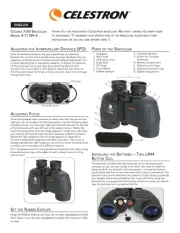
11 Mei 2025

31 Maart 2025
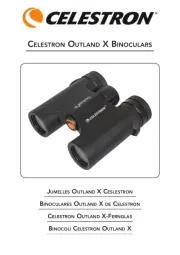
31 Maart 2025
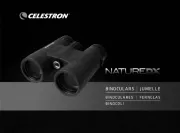
31 Maart 2025

25 Juni 2023

20 Mei 2023

19 Mei 2023

6 Mei 2023

5 Mei 2023
Handleiding Verrekijker
- Nedis
- Pentax
- Canon
- Bushnell
- Goview
- Auriol
- Vivitar
- Rexing
- Pulsar
- Meade
- Bynolyt
- National Geographic
- Discovery
- Focus
- NEO Tools
Nieuwste handleidingen voor Verrekijker
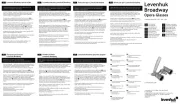
11 September 2025

1 September 2025
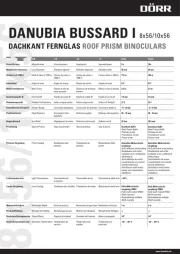
25 Augustus 2025
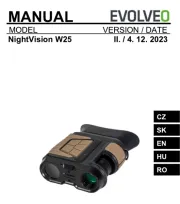
15 Augustus 2025

5 Augustus 2025

22 Juli 2025

22 Juli 2025
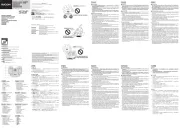
21 Juli 2025

21 Juli 2025
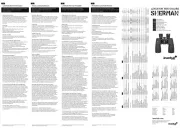
21 Juli 2025